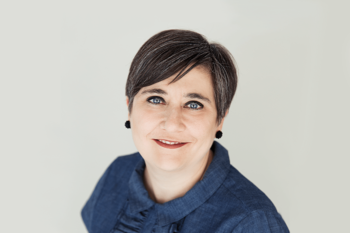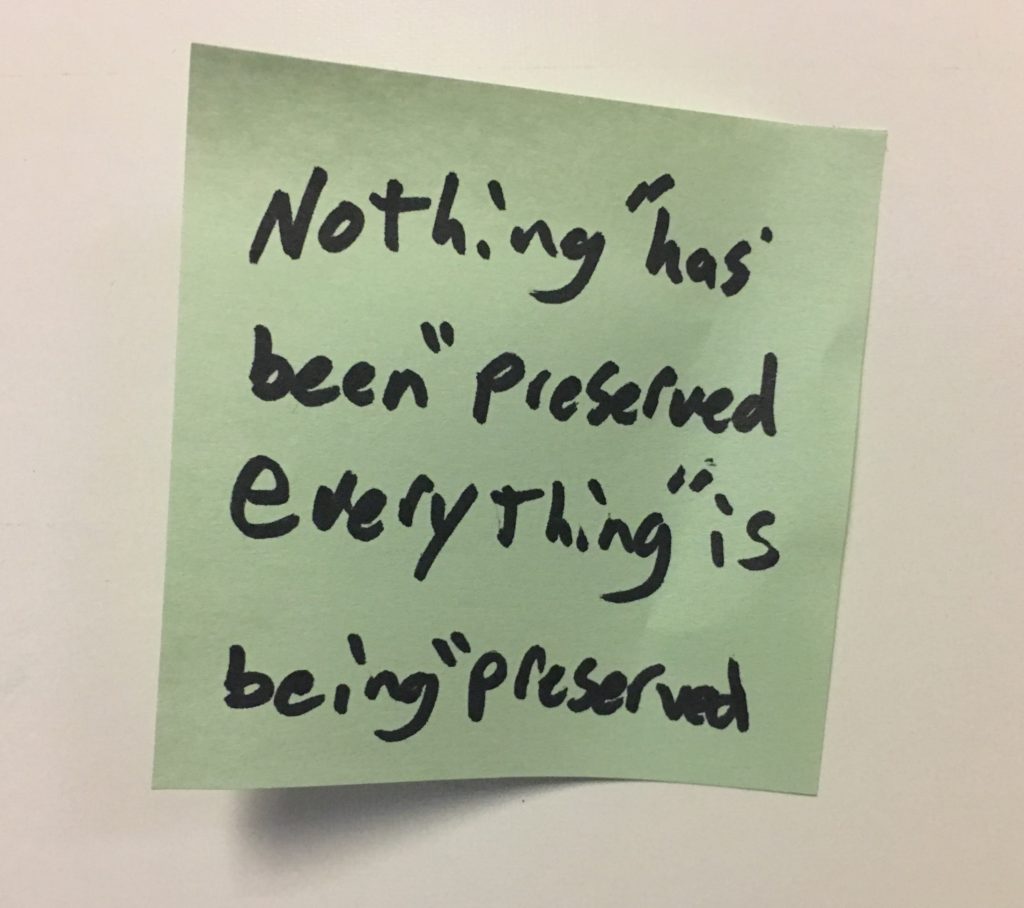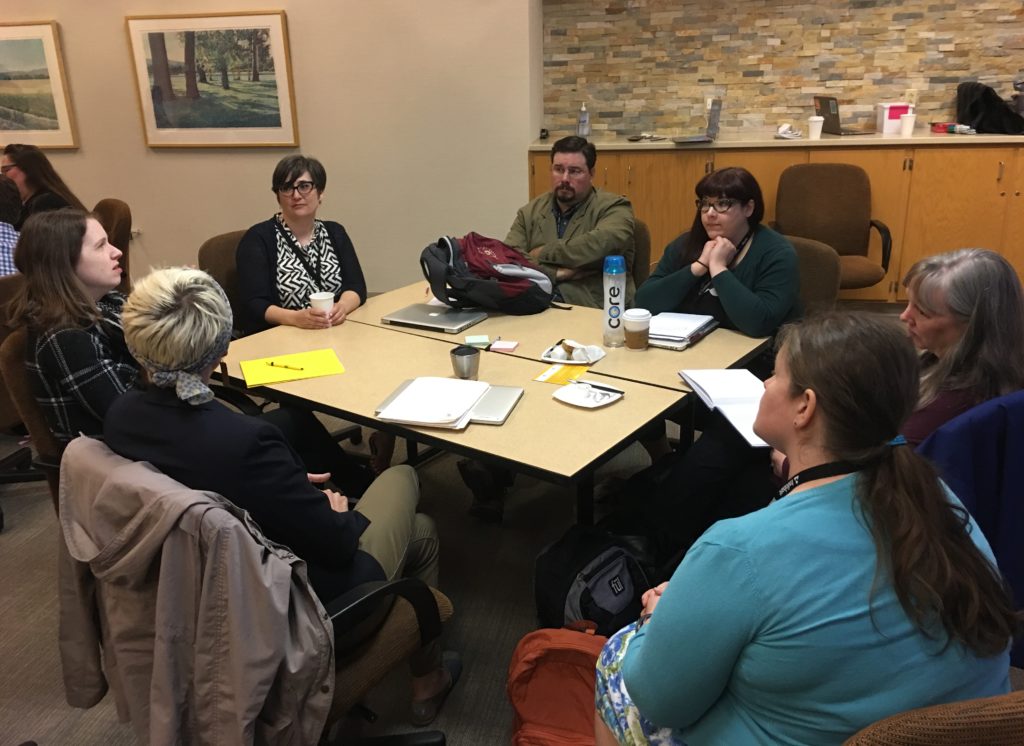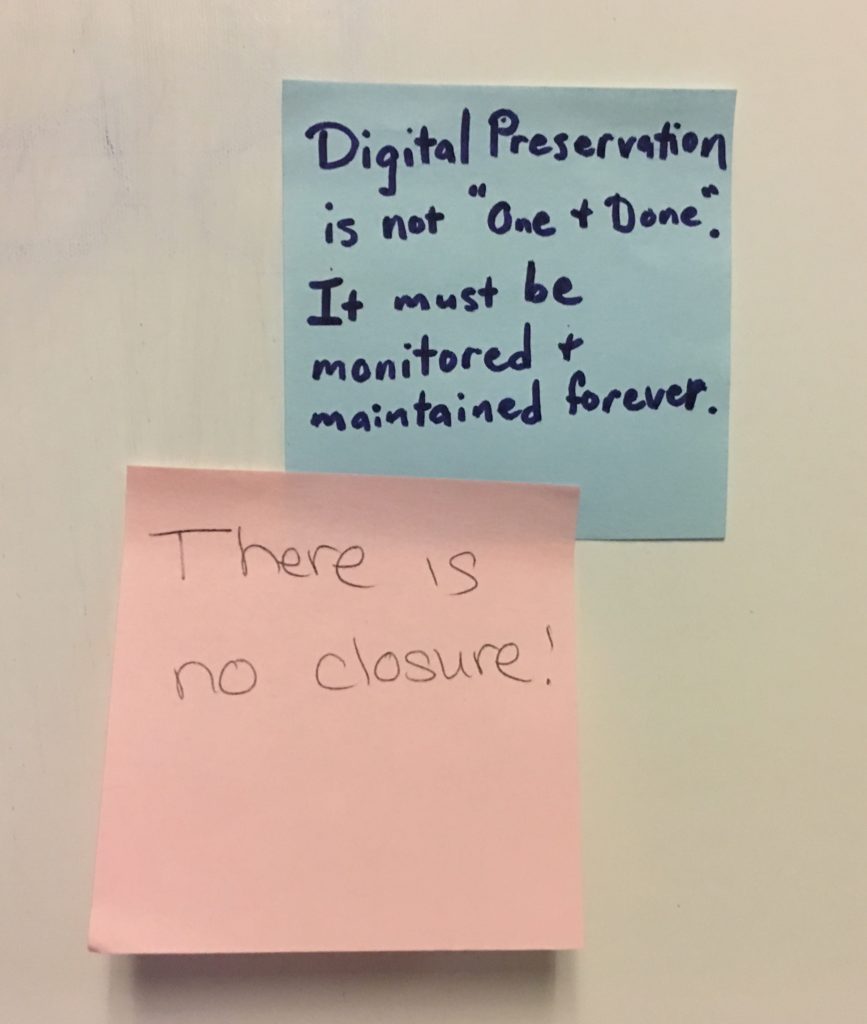
Amy Rudersdorf
For the past year, we’ve had the good fortune to collaborate with AVP Senior Consultant, Amy Rudersdorf. Amy has been instrumental in helping us develop workshop and training content for Curating Community Digital Collections, as well as providing advice on a range of questions related to digital preservation and serving as a “mentor to our CCDC mentors.” As such, we thought you might like to know a bit more about Amy, her background and expertise, and compelling thoughts about digital stewardship work.
1. What is your professional background related to information agencies and digital preservation work?
I have an MLIS from the University of Pittsburgh. I have worked at UW-Madison, first as a metadata librarian, and then as co-head of the Digital Content Group. In North Carolina, I worked first at NC State as the digital projects librarian in the Special Collections Research Center, then as the head of the Digital Information Management Program at the State Library of North Carolina. In this capacity, I oversaw the digitization unit and the digital preservation of state publications, including social media and websites. From there, I moved to the Digital Public Library of America, and as the associate director for content, I had the opportunity to work with colleagues all over the US to help build a library of digital assets representing the history and culture of the United States (and beyond!). Now, I am a senior consultant at AVP, an information management consulting and software development firm based in Madison, Wisconsin and Brooklyn, New York.
2. What’s your current role and work at AVP?
I love working at AVP because we get to put our hands on all sorts of projects. I’m involved in developing two exciting tools right now. One is the recently released Aviary, an audiovisual publishing platform that makes AV content as intuitively searchable as text. The other is creating mass metadata at scale for audiovisual content! Beyond that, I help clients develop digital preservation policies, acquire and implement technologies like DAMs and digital preservation systems (like Preservica, Libnova, etc.), and data wrangling, to help institutions migrate from one digital technology to another.
I’m currently working with an academic institution to develop workflows so that their preservation system can ingest content from different sources, including their digitization units (both 2D and AV), digital reformatting being performed by vendors, and for their legacy collections. We’re looking forward to moving 100 TB of data into their system this spring!
3. Why digital preservation? Why should information agencies care about this work?
Oh boy, where do I start? Cultural heritage institutions in the United States are the keepers of our nation’s history. They tell the national and local stories of our society and its impact on EVERYTHING — history, geography, technology, sociology, politics, you name it! And, these collections are increasingly digital — born as digital objects (Word, PDF, etc.) or are digitized. If we lose that history, we lose our grounding as a society. Imagine your life if you didn’t know your past! So, as keepers of these collections, we have, by default, signed on to saving them. It’s a huge responsibility, and I am passionate about helping organizations do just that!
4. In your opinion, what’s the most pressing issue for anyone engaged in digital preservation work?
Two things come to mind immediately. The first is audiovisual collections, and especially media on magnetic tape. This technology has come to the end of its life. Between degradation of the tapes themselves, to the obsolescence of the machines on which to play them, we have a national emergency on our hands. Audiovisual materials are expensive to digitize (the best way to save them). Once digitized, the files are HUGE and thus really expensive (and challenging) to store and monitor to preserve them for the long-term. We have to find ways to express this urgency to decision makers who have the power to decide how institutional resources are spent.
The second is systematizing digital preservation. Many institutions store their content well enough (although quite a few don’t even do that!), but few have an actual systematized program with policies, documentation, plans, sufficient resources (people, technology, and monetary), or the abilities or infrastructure to perform preservation activities. We must begin to communicate to
5. What are a few key ideas or advice or questions you would share/ask of any organization embarking on a digital preservation project or programs?
- Make a list of the digital collections you have and *then* decide what you need to preserve. Prioritize!
- Make at least one copy of all your digital content that requires preservation. Store each copy on a different type of media in a different location. Think to yourself, “Where can I put a copy of these files, so if [insert natural or man-made disaster here] occurs, I’ll still have them?”
- Develop a plan. Now that the collections are backed up, create a plan for building a digital preservation program. REMEMBER: backing up your files is just the start.
6. Can you recommend a few good resources for organizations pursuing a digital preservation project or program?
- NDSA Levels of Digital Preservation. This is a great resource for assessing technical readiness. Note: This will be updated in 2019.
- DPN Digital Preservation Curriculum. This workshop curriculum equips participants with a set of skills and knowledge that enables them to enact programmatic digital preservation within their organization and is focused on equipping organizations with the capability to implement and manage a digital preservation program. The workshop modules present the requirements of a digital preservation ecosystem from two parallel viewpoints: governance and program management as well as asset management.
- Digital Preservation Coalition’s Digital Preservation Handbook.
Our sincere thanks to Amy Rudersdorf for sharing her time and expertise with Curating Community Digital Collections, Recollection Wisconsin and our larger community of digital preservation practitioners! We look forward to more collaboration and knowledge-sharing opportunities with Amy.

“Nothing has been preserved, everything is BEING preserved.” 
Amy Rudersdorf of AVP meets with CCDC mentors. 
“Digital preservation…must be monitored and maintained forever.”



You must be logged in to post a comment.